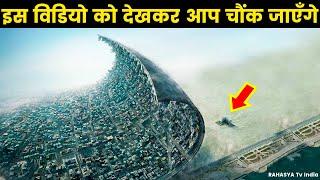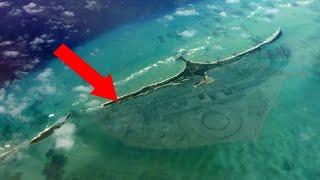वैज्ञानिक भी है हैरान यह कैसे संभव है || Unsolved Mysterious Places on Earth
Description
#RAHASYATvIndia
Check this video out to find out about the Top 10 mysterious places on Earth. Lots of these mysteries are still unsolved! Are you aware of any of these top 10 mysterious places?
On a cold November day in 1930, Canadian fur trapper Joe Labelle was traveling near Anjikuni Lake in the Northwest Territory of Canada, now part of the modern Nunavut province. Aware of a Eskimo settlement in the area, he entered the community looking for lodging and found it completely deserted. In his search, he found meals that had been started and left abandoned, empty huts left stocked with food and personal possessions, a recent fire left smoldering, a discarded repair of a junior sealskin that had yet to be completed and no signs of a struggle that would have explained the whereabouts of the people. Whatever had happened had forced the entire settlement to abandon the location. There were no tracks and the most gruesome discovery was the reason for the absence of the dogs. Every single one of them had starved to death. Food, arms, and clothing had all been abandoned.
Labelle continued onward to the closest telegraph office located several miles further on and reported his encounter to the Mounted Police (RCMP) to launch an official investigation. Their investigation took testimony from a trapper named Armand Laurent and his two sons. When questioned, they said they saw a large cylindrical object that transformed into a bullet shape before heading toward Anjikuni Lake. At the village, the RCMP found the kayaks still sat on the beach, meals still hung over long-dead cooking fires and the frozen bodies of the villagers' dogs. They also found that every grave in the burial ground had been opened and emptied. The headstones had been neatly stacked in piles on either side of the graves, ruling out animals as the culprits.
The RCMP eventually concluded that the Inuit people had been missing for about eight weeks prior to Labelle’s arrival, but they never came up with an answer as to why the entire settlement had abandoned the location.
Background: The earliest recorded publication about Anjikuni Lake is a 1976 citation of an article from November 29, 1930, written by an Emmett E. Kelleher in an article in "The Bee" from Danville, Virginia, later confused with the Halifax Herald newspaper.
Investigations: Brian Dunning of the Skeptoid website researched this case and traced it back to the November 29, 1930 article written by Kelleher. He remarked several inconsistencies in the original story, such as the fact that the missing Inuit kayaks would not be "battered by wave action" during a time the lake was frozen. He also noted that the supposed population of the village increased in size in later re-tellings and other facts became embellished as well. The three trappers and their description of a UFO was first mentioned in print in the book, "World's Greatest UFO Mysteries" by Nigel Blundell and Roger Boar. Furthermore, no physical evidence exists of a village at Angikuni Lake, and nobody has ever published an account of going up there and clearing away any remnants.





















Comments